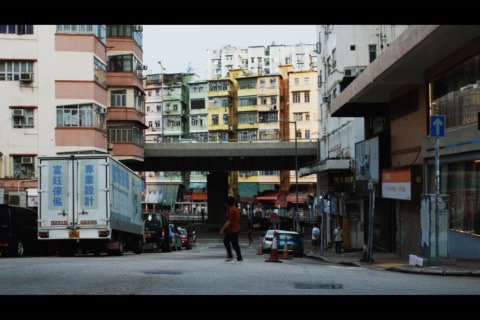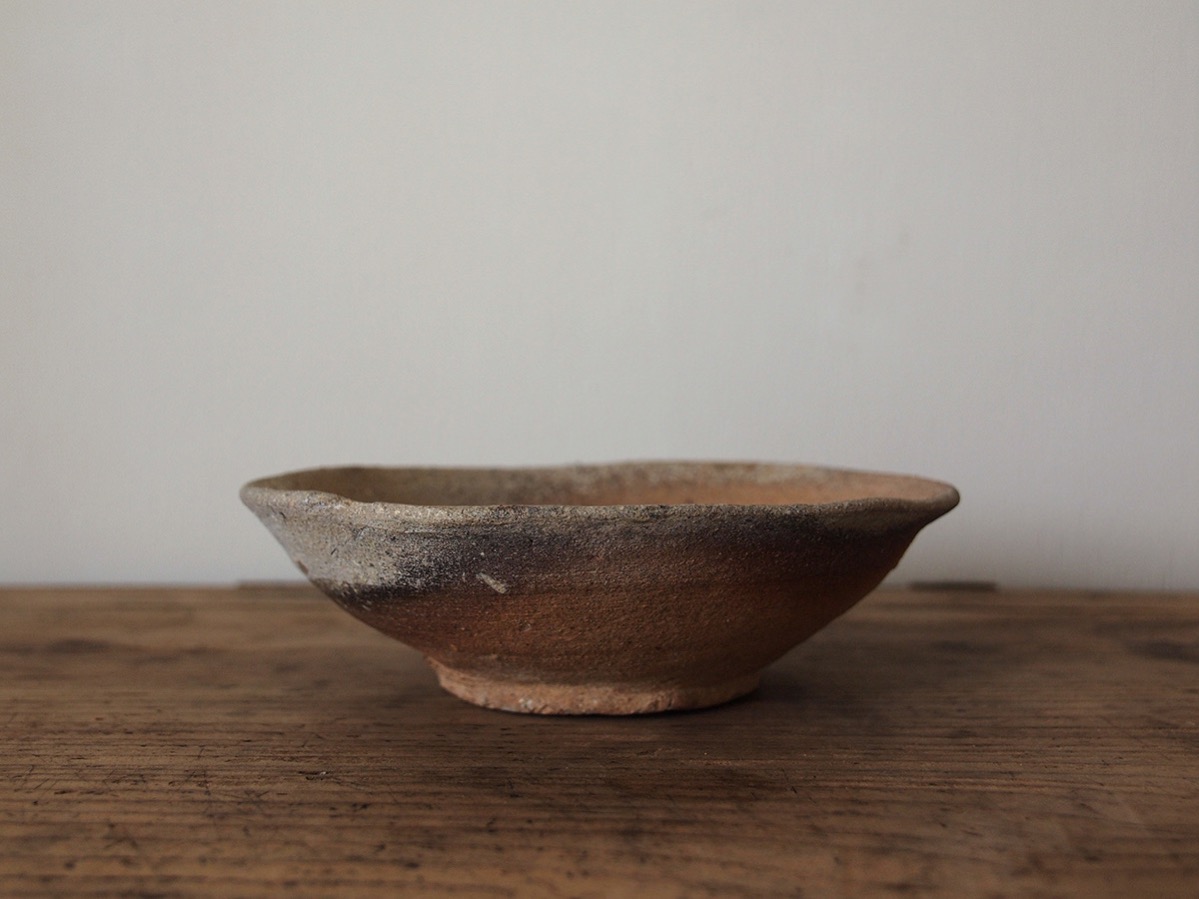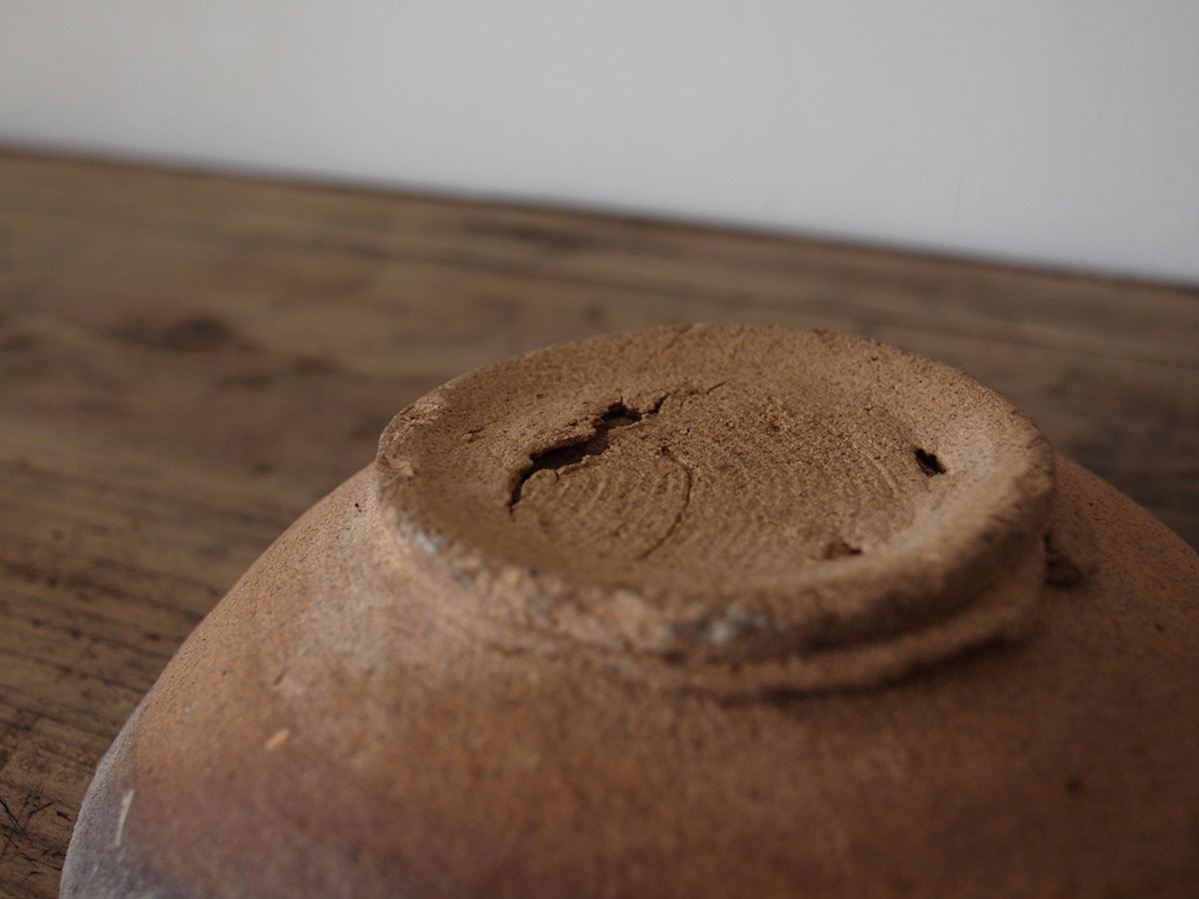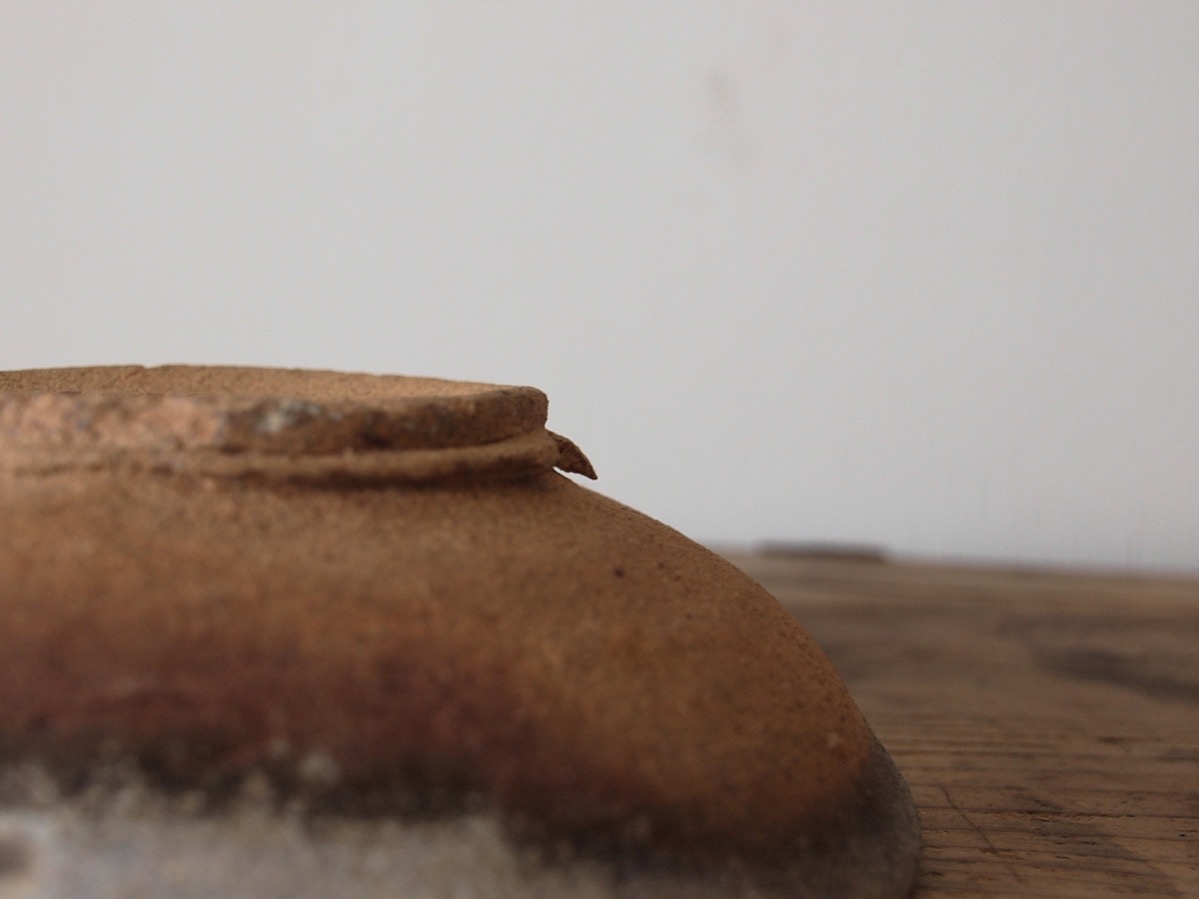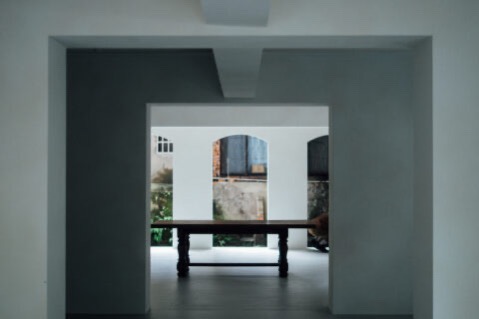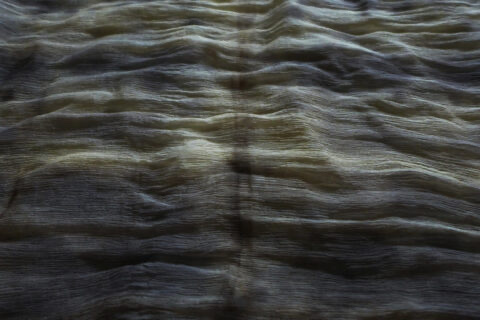R: 林琪香 / Ron Lam
M: 金森正起 / Masaki Kanamori
R:最近常聽你提起「山茶碗」,山茶碗是甚麼呢?
M:山茶碗是平安時代一種量產的茶碗,在這附近的瀬戶市、美濃、多治見等,也是山茶碗的產地。因為是後人在山中或古墳裡發掘出來的,所以稱為山茶碗。通常山茶碗都沒施釉的,造工粗糙,也有些是用天然灰釉的,即是放在柴窯裡燒時,柴灰落在器物之上,經過高溫燒成後,就會成為天然的釉藥。嗯⋯⋯不過其實我也不大確定它是否真正的山茶碗,或許只是形狀及燒成的方法相同而已。
R:你從很久以前就對山茶碗感興趣嗎?
M:是呢,一直都很想擁有,卻找不到真正想買的,可能對我來說,大部分山茶碗都太「強勢」了吧,存在感太強烈。直到遇上這個,我對它一見鍾情,立時將之買下。我覺得買與不買,是衡量「喜愛」的重要標準。你是單純覺得它很不錯,但可有可無,甚至過目即忘,還是甘願付出,把它據為已有。另外,買後感到後悔,還是感到「還好買了」,這個反省過程,是更了解自己喜好及美學準則的重要方法。
R: Recently, you have been talking a lot about Yama-chawan (literally translated as mountain tea bowl), so what exactly is that?
M: Yama-chawan is a type of tea mass-produced during the Heian period. Seto, Mino and Tajimi nearby were all regions that manufactured Yama-chawan. The tea bowl got its name as it was unearthed in the mountains or in ancient tombs. The most common type of Yama-chawan is unglazed and shoddy; some of them have ash glazes, which are formed naturally when the ash falls onto the pottery in the kiln after the high-temperature firing process. But to be honest, I am not sure whether this is an authentic Yama-chawan, perhaps it just looks similar and made using the same firing process.
R: Are you always interested in Yama-chawan?
M: I am. I always wanted to own one but couldn’t find one that I wanted to buy. Maybe I find most of the Yama-chawan too strong in personality. I finally had a strong urge to buy when I met this one. I simply fell in love with it at first sight. I think to buy or not to buy is a good way to measure how much you like an object. Sometimes you find something pretty nice, but you don’t need to own it, you might even forget about it right away; some other times you are willing to pay to own it. There are some other occasions when you regret buying something, but after a second thought, you still feel glad about the purchase. This self-reflection is an essential process for you to understand better your preference and aesthetics.
R:這個山茶碗跟其他的有甚麼分別呢?是甚麼元素吸引了你?
M:泥土的顏色是我喜愛的。大部分山茶碗都是灰白或黃白色的,是泥土燒成後的色彩,而這個則是淡色棕色的。口緣的孤度很獨特、還有高台的的形態,看來都非常軟和,感覺很好。
R:你覺得這是失敗作嗎?它底部有一個洞,可能是因為揉陶泥時不夠仔細,塑陶時泥裡仍留有空氣吧。高台上還是裂開的。首次看到它時,我想便想:居然特意把這東西放在窯裡燒啊。
M:當然是失敗作了。有些山茶碗的歪斜是偶然形式的,但它的歪斜程度、裂開的程度,實在太過了。不過製作者本人沒想那麼多吧,因為當時的山茶碗是非常粗製濫造、大量生產的東西。我猜它可能是陪葬品,又或是用來奉神的,不會實際被使用,所以也沒考慮太多。這馬虎的感覺,是我作在現代工藝家,很嚮往的風格。並不是說追求造工粗糙,而是氣質,柔和的、舒埋自在的、富有偶然性的。金屬是很強硬的素材,用金屬造出陶器般柔美的氣質,是我一直追求的。
R: 器物上有這些「失敗」的部份,使用時,反而內心會產生更多的餘裕呢。
M:是呢,不過在製作時,若刻意造出「失敗」,氣質會變得很突兀。這種形狀的山茶碗,在世界應該是獨一無二的,畢竟它並非在計劃或設計之內。幾乎所有人開始接觸工藝時,都對「完成度」有所追求吧。這種工藝技術粗淺,可能是因為得在短時間內完成,又或是本來沒有技術的人造出來的東西,談不上「完成度」,卻很有吸引力。
R: How is this Yama-chawan different from others? Why did you find it particularly charming?
M: I like the color of the clay. Most of the Yama-chawan are either greyish or yellowish white in color as this is how clay looks after firing. This one is, however, light brown in color. Its rim has a very distinctive curve, I also admire the gentleness of its foot.
R: Do you think this is a faulty product? There is a hole on the bottom which is very likely to be the result of unevenly kneaded clay that retained air bubble; the foot has also split open. When I first saw it, I couldn’t help asking myself, “Who would spend the effort of firing it in a kiln?”
M: This is for sure a faulty product. The irregular curve as seen in some of the Yama-chawan is a natural result in the production process, but the curve and crack on this one are obviously too much. The person who made this probably didn’t think much about it. Yama-chawan was considered low quality, mass-produced items anyway. I guess it was used as a funeral or religious object. It wasn’t supposed to be actually used, so it’s okay to be rough. This carelessness is what I adore as an artisan in the modern era. What I am trying to celebrate is not the shoddiness, it is the accidentally formed charisma so tender and liberal that I embrace. Metal is an unfriendly material, but I always want to make metalware that can be as gentle as pottery.
R: I sometimes feel more comfortable using these so-called flawed objects.
M: Indeed. But it would look so dull if an artisan tries to make flaw deliberately. A Yama-chawan shaped like this is for sure one of a kind. It should be an unexpected outcome that is totally unplanned. Everyone has a craving for perfection when getting into the world of craftsmanship. But looking at the poor technique of this, I began to imagine it must be made within a short time or by someone who had no skills at all. This justifies why it has nothing to do with perfection but yet is full of charisma.
R:為甚麼我們都對精緻的工藝不感興趣,卻喜歡不完美而製作粗疏的東西呢?會不會是因為精藝精湛的人,就像說話很圓滑的人一樣,很難讓人感受其內心呢?另一方面,很吊詭的是,你作為擁有一定技術的工藝家,也很難放棄「完成度」,對嗎?
M:我想不管是技術精湛或技術不足的人,在其作品中都很看到其個性、感受到其內心的。在這階段,我不想造那些表現自己技術的東西了。最近有些作品,可能有些人會覺得,工藝家居然造這些東西,但我現時就是被那些粗糙的工藝吸引,也希望自己能造出同樣特質的作品。只要孜孜不倦,努力練習,就能擁有精湛的技術了,而要造出看似粗糙而不刻意的東西,則需要不斷的自省,觀察自己的內心,這可能比鍛鍊技術更難吧。
R: We are both disinterested towards fine craft and more inclined towards imperfect and carelessly made objects. Why is that? Is it because we tend to relate skillful artisans to sleek people whose genuine thoughts are somewhat difficult to tell? I am also curious to know if a skillful artisan like yourself can give up the desire for attaining perfection.
M: I think we can see a person’s personality and mind through their work regardless of the level of their skill. At this stage of life, I no longer want to work on demonstrating my techniques. I guess some of my recent works would raise doubts as people don’t suppose those are the things made by an artisan. But this is me now, being attracted to unpolished objects. Therefore I want to create objects that exude similar charisma. Marvelous skills can be obtained as long as you spend a great effort on learning and practicing, but to make unpretentiously imperfect objects, you need to keep reflecting on yourself and have a good conversation with your inner self. This is perhaps even more difficult than perfecting your skills.
